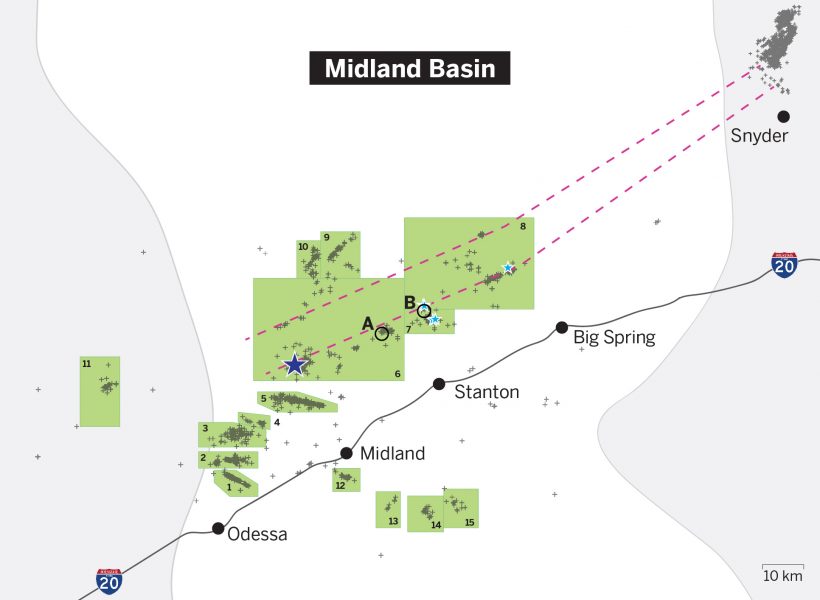Earthquakes on the Move in Midland Basin
Since 2017, Jackson School of Geosciences researchers have been using the TexNet monitoring network to detect earthquakes across Texas. Now, that data is helping them project where the quakes are likely to go next.
After analyzing seven years of earthquake data from the Midland Basin, scientists at the school’s Bureau of Economic Geology have determined that seismic activity in the region is probably on the move northeast toward the community of Big Spring.
Although most past quakes happened in the southwest region near Odessa and Midland, the researchers identified a seismicity trend moving along a newly identified and extensive seismogenic fault zone stretching toward the northeast edge of the basin.
“The fault zone has been activated, and it has the capability to trigger additional earthquakes that can be felt by humans, especially because it’s so close to major cities along Interstate 20,” said Dino Huang, a research assistant professor who led the research.
The results were published in the journal Seismological Research Letters.

The researchers used data from TexNet seismometers to determine the depth, location and orientation of geologic faults using a technique called a passive seismic analysis. Unlike active seismic analysis, this technique does not require manually firing a seismic energy source, such as an air gun, to explore the underground fault structures. The analysis allowed the researchers to chart previously unmapped parts of the Midland Basin fault system and identify 15 distinct earthquakeproducing zones.
The researchers then combined the data on earthquake frequency and magnitude from all the zones to determine the future seismic potential of the entire Midland Basin.
The Midland Basin is one of the major hubs for oil and gas extraction in Texas. Over time, the injection of wastewater from these operations into the subsurface has introduced stress along faults that has triggered earthquakes. According to the researchers, data from TexNet is helping them understand that state= of stress on the fault system and how to mitigate induced seismicity.
The University of Texas at Austin
Web Privacy | Web Accessibility Policy | Adobe Reader

